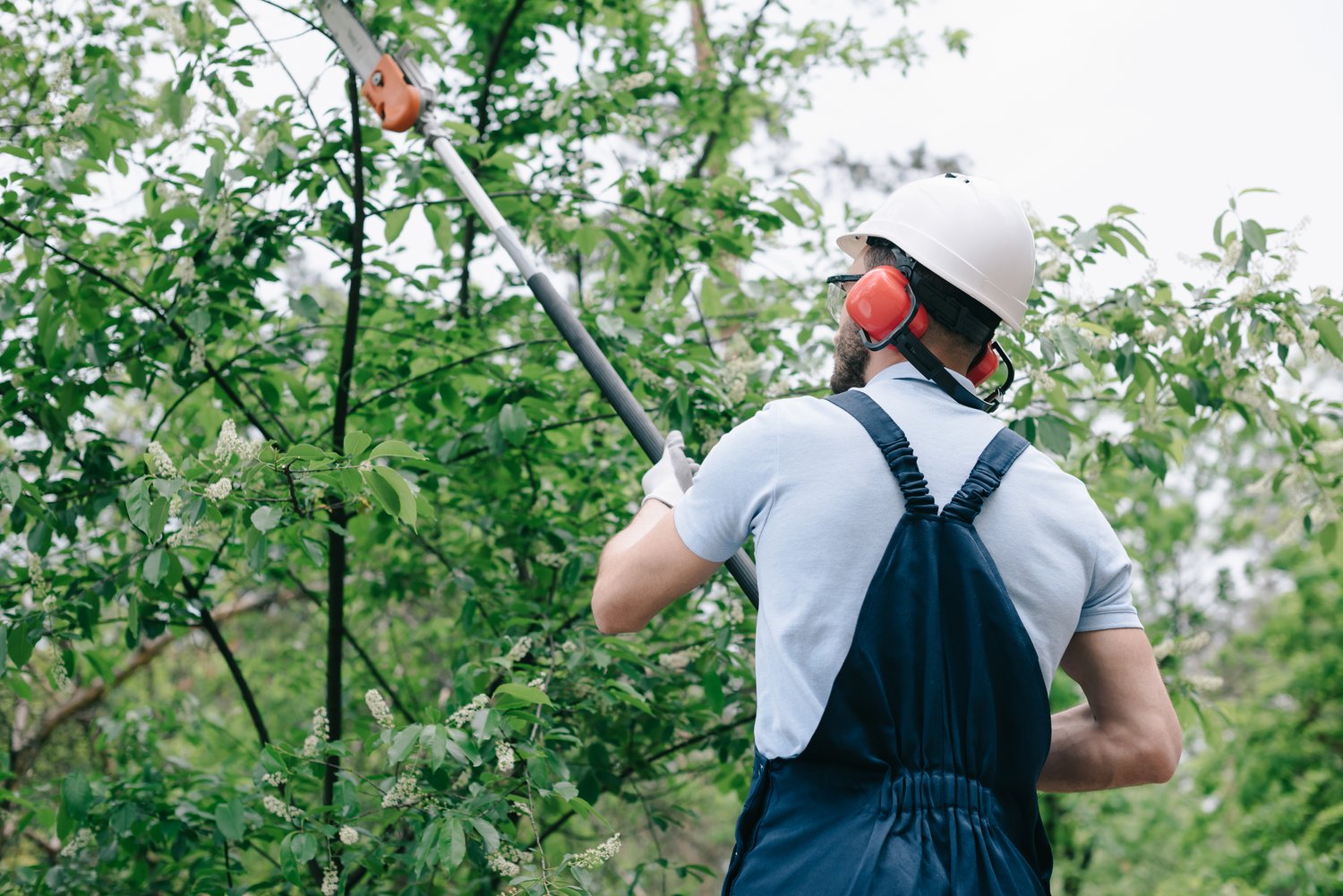Winter is an ideal time for tree pruning, offering several advantages for the health of your trees and the overall beauty of your landscape. Proper pruning during the colder months prepares your trees for healthy spring growth and helps prevent potential hazards caused by weak or overgrown branches.
Following safe pruning practices is essential whether you’re looking to shape your trees or ensure their structural integrity.
Why Winter Pruning Is Beneficial
Pruning in winter provides several advantages for the tree and the property owner. Without leaves, it’s easier to see a tree’s structure and identify weak or damaged branches. Additionally, trees are dormant during the winter months, which means they are less susceptible to diseases and pests that are active during warmer seasons.
Bare branches improve visibility when assessing a tree’s structure, making identifying problems and planning cuts easier. Furthermore, pruning during dormancy enables cuts to heal more effectively, reducing the risk of infection. This combination of benefits supports healthier growth and ensures the tree can direct its energy toward thriving in the spring.
Essential Tree Pruning Tips
Proper technique ensures safety and effectiveness when pruning your trees this winter. Begin by carefully inspecting each tree to identify dead, diseased, or hazardous branches. Look for signs of decay, such as discolored bark, cracks, or fungal growth, which indicate which branches require removal.
Using sharp, clean pruning shears, loppers, or a saw will allow you to make clean cuts that minimize stress on the tree. Dead or broken branches should be prioritized for removal, followed by branches that cross or rub against one another, as these can weaken the tree’s overall structure. Following a methodical approach for larger branches is essential to avoid damaging the trunk or bark. Start by cutting several inches away from the trunk to prevent bark tearing. Then, make a second cut further out to remove the branch. Finally, finish with a clean cut close to the trunk, ensuring you leave the branch collar intact for proper healing.
Avoiding Common Pruning Mistakes
Pruning may seem straightforward, but common errors can negatively impact your trees’ health. Over-pruning, for example, can stress a tree by removing too many branches at once, hindering its ability to recover and grow. Making improper cuts that are either too close to the trunk or too far from the branch collar can leave the tree vulnerable to disease and decay.
Additionally, neglecting safety precautions, such as working without protective equipment or attempting to prune branches near power lines, can lead to serious accidents. You can ensure your trees remain strong and healthy by avoiding these mistakes and prioritizing careful, deliberate pruning.
When to Call in the Professionals
Tree pruning can be dangerous, especially when dealing with large trees, high branches, or complex growth patterns. Hiring a professional arborist ensures that the job is done safely and effectively, preserving the health of your trees while protecting your property.
Arborists have the expertise and equipment to handle tasks at height and can assess structural issues within the tree that may not be apparent to an untrained eye. They also guide overall tree health, including preventative care and long-term maintenance plans.
By working with a professional, you can rest assured that your trees receive the best care.
To connect with trusted arborists near you, visit AskHomey.com. Through AskHomey, you can find experienced contractors specializing in tree care and maintenance, making it easy to prepare your trees for winter growth.
Long-Term Benefits of Winter Pruning
Investing in proper tree pruning during winter isn’t just about immediate safety and appearance. It also sets the stage for healthier, more resilient trees that will enhance your landscape for years.
Winter pruning reduces disease risk, improves structural integrity, and promotes growth, ensuring your trees are prepared to thrive in the spring. The benefits extend to the overall health of your property, as well-maintained trees contribute to curb appeal and reduce the likelihood of costly damages caused by falling branches.
Ready to give your trees the care they need? Discover trusted tree care experts near you by visiting AskHomey.com. For more seasonal tips and inspiration, follow us on Instagram and Facebook. Ensure your trees are healthy and your property safe this winter season!



